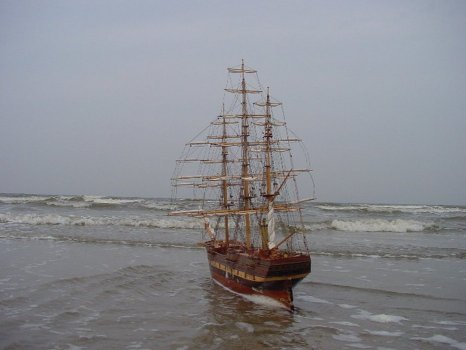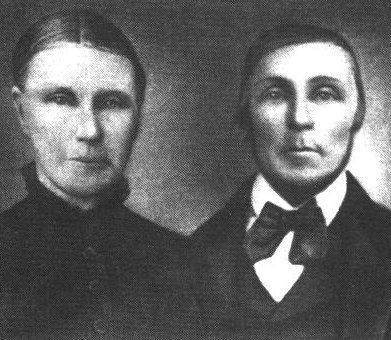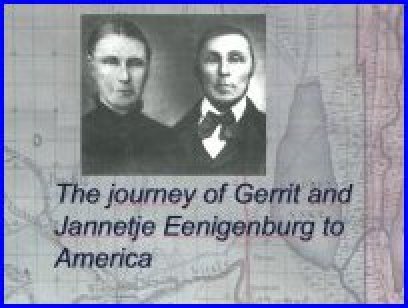1849 Emigration & Settlement in America
In 1849, the Eenigenburg family emigrated to America in a group of 65 courageous souls. A baby was born in Le Havre taking the total to 66. The group included three Eenigenburg siblings and their families: Gerrit & Jannetje (Ton) Eenigenburg, Jakob & Geertje (Eenigenburg) De Jong and Hark & Johanna (Havik) Eenigenburg. Previous sources listed Hark’s second wife, Aaltje den Toom, in the group, but later research confirms she did not emigrate or marry Hark until later.
Because the Eenigenburg family has grown so exponentially, this website focuses primarily on our ancestors, Gerrit & Jannetje Eenigenburg. They were also the first Eenigenburg family land purchasers in the new settlement.
The Journey
It was April 24, 1849. Imagine the thrill, the apprehension, and the hope that filled the hearts of the party of young Dutch families as they boarded the Massachusetts of Boston in Le Havre, France. Having departed Krabbendam (on the canal near Eenigenburg) in the Netherlands on April 14th (first by canal barge to Rotterdam, followed by steamboat to Le Havre), this courageous group headed for the new world, with visions of making a good living for their young families and the promise of religious freedom.
 Exact replica of the Massachusetts of Boston in the North Sea
Exact replica of the Massachusetts of Boston in the North Sea
Three days into their 42-day ocean voyage, Asiatic Cholera broke out. It ultimately consumed 17 lives at sea, including 13 children. The grief was unimaginable, as one-by-one, adults were stricken in their prime, grieving parents lost their children, and victims were torn from their loved ones for immediate burial at sea… all in a futile effort to contain the spread.
Gerrit & Jannetje Eenigenburg lost three of their four children on the journey – Jan (1845), Joris (1846) and Pieterje (1849). Only their five-year old Trijntje (1843) survived. In total, four adults and 15 children of the group died on the journey (including one child in Rotterdam, and a new baby born in Le Havre who died at sea), for 19 of the 66 souls.

Jannetje (1818-1883) and Gerrit (1814-1893) Eenigenburg
Greater Detail on the Voyage:
In 2015, the Eenigenburg Museum created the following descriptive presentation of the voyage to America. It is being shown to museum visitors in Dutch and has been translated it into English so the family can enjoy it. Click on the image to view.
Mercifully, the group finally landed in New York harbor on June 4, 1849. Two weeks later, after traveling through the Great Lakes, the survivors of the 60-day, tragedy-filled voyage arrived in Chicago. On the dock, they were met by Klaas Pool, an old acquaintance who had traveled to America two years earlier. Klaas led four of the men, chosen as the scouting party, on foot the 13 miles to High Prairie (now Roseland). They also traveled another six miles to Low Prairie before deciding where to settle.
The New Settlement – High Prairie (Roseland)
On July 3, 1849, the settlers bought 160 acres of prime land for $5 per acre from 103rd to 111th Streets, and from Indiana Avenue to State Street (as we know the area today). Although their arrival at the settlement was briefly delayed due to their being quarantined in New York, Gerrit & Jannetje purchased the 10 acres at 110th Street the others had reserved for them.
But the hardships were not over. The country was wild and primitive, the winters were extremely harsh, and the farming was difficult. There were no railroads or wagon roads, only a primitive trail.
The new settlers were up to the task, and the land was extremely fertile. The pioneers were successful in their new community. In fact, many of them did extremely well in the boom years that followed.
Gerrit & Jannetje Move to Oak Glen
In 1853, seeing greater opportunity in raising livestock, Gerritt, Jannetje and their family moved again. They bought 160 acres of land about 15 miles south (Oak Glen, now Lansing), for 93 cents per acre. They were the second family to settle there. Gerrit was successful enough to retire early, leaving the farming to his sons George and John, while Harry chose to leave home to pursue the carpentry trade.
